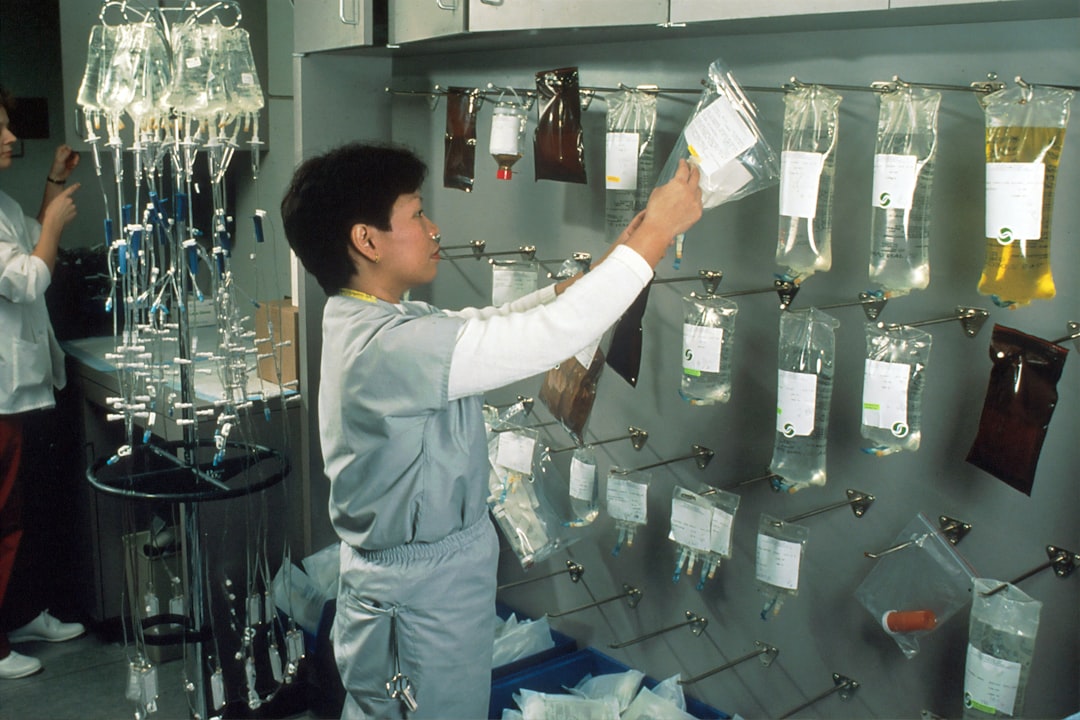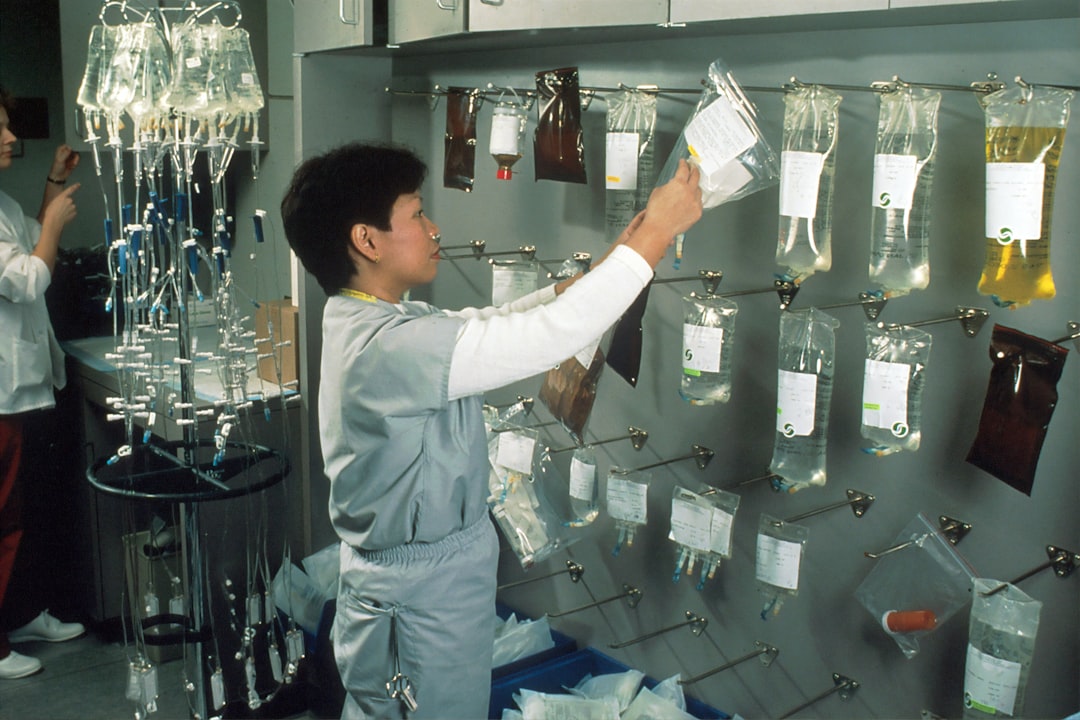

Engage prospects with a scan and streamline customer engagement with FREE QR code marketing tools by Sona – no strings attached!
Create a Free QR CodeFree consultation

No commitment

Engage prospects with a scan and streamline customer engagement with FREE QR code marketing tools by Sona – no strings attached!
Create a Free QR CodeFree consultation

No commitment
In today’s digitally driven world, QR codes have transitioned from novelty to strategic tool in bridging offline engagement with online action in QR code marketing. For biomedical product suppliers, QR codes provide a frictionless, scalable, and powerful way to boost patient and healthcare professional engagement across medical marketing, simplify regulatory documentation sharing, and accelerate the medical supply chain. By connecting physical products, packaging, and marketing collateral to rich digital experiences, suppliers can deliver essential resources without requiring an app download or complex setup.
The biomedical product industry faces persistent friction points: delays caused by paper-based workflows, gaps in documentation access, confusion among buyers regarding product certifications, and the ongoing risk of regulatory non-compliance. For many, the pain is heightened by the inability to reach all key decision makers when anonymous traffic or high-value prospects never leave a digital trace in the CRM, resulting in missed opportunities and lost revenue. Sona is an AI-powered marketing platform that turns first-party data into revenue through identity resolution and automated attribution. Learn more at Sona. Without visibility into who’s showing early interest or exploring sample requests, suppliers struggle to personalize outreach and coordinate timely follow-ups.
QR code-powered documentation, batch traceability, and product education are rapidly emerging as transformative solutions to these challenges. By placing QR codes at all relevant touchpoints: product packaging, shipping labels, conference materials, and more, biomedical suppliers enable real-time document access, streamline compliance validation, and reveal high-intent buying signals that would otherwise be missed. This guide explains how QR code strategies can expedite information delivery, improve healthcare and medical device marketing, and build deeper buyer trust through transparency and engagement.

Sharing accurate documentation in real time is a challenge for biomedical suppliers. Regulations evolve, batch-specific paperwork must be tracked, and paper manuals or static PDFs create workflow disruptions when assets go out of date. Teams face friction when critical instructions for use or certificates are missing or when updates lag behind product changes, which can lead to compliance issues, higher support volume, and poor user experience across hospitals, labs, and distributor networks.
QR codes bridge this gap by turning every physical item into a gateway to the latest digital content. With the Sona QR platform, teams can publish controlled documents, product data sheets, and training modules behind scan-ready links. This approach reduces paper waste, shortens the time-to-information, and ensures that procurement officers, biomedical engineers, and clinicians always access current versions with a verifiable audit trail. As a result, suppliers improve buyer confidence, meet regulatory expectations, and reduce the cost of reprints or replacement inserts.
When implemented thoughtfully, QR codes deliver a secure, auditable, and efficient solution that aligns with quality systems, accommodates region-specific regulations, and scales from pilot programs to enterprise-wide deployments.

Biomedical suppliers operate in a high-stakes environment where disconnected information channels carry real risk. Procurement officials, hospital value analysis committees, and end users often rely on packaging, outdated brochures, or static PDFs that may not reflect the latest product specs, safety updates, or certifications. When products evolve faster than printed materials, suppliers face costly reprints, compliance exposure, and frustrated buyers who cannot find what they need in the moment.
QR codes minimize these gaps by making packaging, shipping documents, and marketing materials responsive to change. A single dynamic QR can route scanners to updated IFUs, SDSs, Certificates of Analysis, Declaration of Conformity, UDI resources, or training content that aligns with current regulatory requirements. Because scans are trackable, suppliers also gain insight into buyer intent and documentation demand at each stage of the journey: from discovery at a trade show to validation during vendor evaluation to post-purchase support in clinical settings. For sector-specific tactics, see healthcare strategies.
Easy, on-demand access to critical documents and analytics turns every scan into both a service improvement and a data signal your team can use to prioritize outreach and accelerate deals.

Biomedical workflows involve multiple document types and actions, from verifying a lot’s Certificate of Analysis to submitting a sample request. Selecting the right QR destination for each scenario ensures scanners land on the most helpful experience possible. In general, dynamic QR codes are best for assets that change or require measurement, while static codes work for fixed, evergreen materials.
In this vertical, formats that streamline documentation, traceability, and contact initiation tend to deliver outsized value. Consider combining formats in a single campaign: for example, a product label might include a QR linking to the IFU while a carton insert links to a validated CoA or a short onboarding video for clinical staff.
With centralized management, your team can govern access, ensure document integrity, and keep analytics consistent across all QR types and destinations.

Suppliers often miss opportunities because calls to action are not present at the decision moment, or because the path from physical to digital is unclear. Strategic QR placement bridges that gap: it puts the next step at a buyer’s fingertips, captures valuable context, and shortens the path to conversion or compliance.
Think through the buyer and user journeys across environments like trade shows, hospital receiving docks, cleanrooms, and labs. Each location presents distinct scanning contexts, lighting conditions, and device constraints. Placement and CTA language should reflect that reality while complying with packaging and labeling standards.
By aligning QR placements with real buyer behavior and internal handoffs, you eliminate friction in both sales and fulfillment, increase transparency, and create new measurement points across your go-to-market motion.

Biomedical product suppliers grapple with missed opportunities, compliance ambiguity, and slow sample fulfillment in environments that demand precision and speed. QR codes can be deployed to improve documentation availability, streamline operations, and capture intent signals that drive timely follow-up. The key is to map each use case to a business objective and measurable outcome.
Below are three high-impact applications tailored to common interactions across procurement, clinical engineering, and end-user workflows. While these examples focus on core needs, you can extend the approach to clinical trial kits, loaner equipment, distributor enablement, and post-market surveillance.
Implementing these use cases arms suppliers with actionable buyer insights, supports targeted outreach, and ensures stakeholders receive the right resources at the right time.
Each QR scan is a high-fidelity signal that captures intent data and context: the asset scanned, where it was scanned, and when it occurred. By deploying unique QR codes across journey stages and channels, suppliers can automatically segment audiences and fuel precise retargeting and lifecycle campaigns. This approach is especially powerful when web analytics alone fall short due to anonymous browsing or shared hospital networks.
For biomedical suppliers, audience distinctions often map to role and stage. A clinician scanning an IFU on a device cart implies a different need than a procurement officer scanning a pricing sheet at a trade show. Recognizing these differences allows you to tailor content and outreach rigorously, improving conversion and customer satisfaction.
With a platform like Sona QR, every code becomes a smart entry point that creates a richer profile of buyers and users across accounts, enabling relevant follow-up and better use of sales resources.
QR codes function as connective tissue across offline and digital campaigns. They reduce friction for busy clinicians and procurement teams, while giving marketers and sales leaders the data needed to optimize spend. Integration is not just about adding codes everywhere; it is about using QR to orchestrate a coherent experience that advances buyers from first touch to validation to purchase.
In biomedical markets, this often means connecting conference engagements to post-event nurturing, packaging to support portals, and direct mail to account-based content. The result is a unified journey that feels consistent and responsive, regardless of the channel that initiates the interaction.
Centralized QR management ensures that messaging stays consistent across channels, while scan data flows into your CRM for a cleaner, more actionable view of the buyer journey.
Launching a QR campaign in biomedical supply involves more than printing codes. You must align the initiative to a business objective, select the right code type, design for real-world scanning conditions, and wire up measurement so you can optimize over time. Treat this as a disciplined rollout that closes persistent gaps in follow-up, documentation, and conversion.
Before you begin, pick a single use case that addresses the biggest friction in your current process. This might be improving audit readiness with QR-enabled certificates, accelerating sample requests from event attendees, or cutting support tickets by putting IFUs one scan away on product labels. Start narrow, validate results, then scale. Start creating QR codes for free.
Approaching QR deployment as a structured program ensures repeatability and reduces the risk of orphaned codes, outdated content, or unmeasurable efforts. Once your initial use case proves value, expand methodically into adjacent workflows.
Meaningful attribution in biomedical supply has always been difficult. Procurement decisions involve multiple stakeholders, long evaluation cycles, and a heavy reliance on offline materials. QR codes bring much-needed clarity by tying a physical interaction to a digital record that can be measured, segmented, and acted on. With the right stack, you can go beyond vanity metrics to understand how scans influence pipeline and revenue.
A robust analytics approach starts with standardizing UTM parameters by channel, creating unique codes for each placement, and linking scans to on-page events such as document downloads, form submissions, or account sign-ins. From there, feed these signals into your CRM to enrich contact and account records with intent data. This creates a verifiable chain from scan to opportunity to closed-won.
Sona is an AI-powered marketing platform that turns first-party data into revenue through identity resolution, attribution, and activation. Platforms like Sona QR and Sona.com streamline this process by providing centralized code management, live performance dashboards, and native integrations that map real-world engagement to business outcomes.
Scaling QR programs successfully means aligning design, placement, and data strategy with real-world workflows across hospitals, labs, and distributor networks. A small set of best practices helps you avoid common pitfalls, keep content accurate, and make every scan actionable. Focus on improving what is already working before launching entirely new use cases.
Think beyond single codes and design an ecosystem: a product family might share a standardized QR placement convention, while each region receives localized content and analytics tags. Train internal teams and field reps to promote scanning and to use analytics in weekly revenue meetings, ensuring QR data shapes pipeline strategy.
You can launch and track your first campaigns quickly with tools such as Sona QR, then grow into more advanced segmentation, testing, and attribution as you see results.
Biomedical suppliers have cut support burden and improved audit outcomes by making critical content one scan away. The most effective programs start simple: one product line, one major event, or one documentation pain point. As data accumulates, teams scale placement and expand into new workflows with confidence.
Use these examples as inspiration for your own pilots. They illustrate how a small change in packaging or event strategy can unlock measurable gains in engagement, compliance, and sales efficiency without overhauling your stack. For additional context, see this healthcare QR whitepaper%20(1)%20(1).pdf).
By matching QR destinations to the context of the scan and measuring the downstream effects, suppliers can convert previously invisible demand into documented pipeline.
Every supplier’s digital transformation path is different, yet many run into similar hurdles when deploying QR codes. Success depends on disciplined execution: thoughtful design, reliable placement, consistent measurement, and an operational plan for follow-up. Avoid overcomplicating your first deployment, and build guardrails that protect quality and compliance.
Training and governance matter as much as technology. Assign ownership for QR creation and updates, define SLAs for refreshing content post-change control, and keep a master registry so codes do not outlive their intended purpose. Regular reviews prevent drift and protect your brand.
With these practices in place, QR codes evolve from convenient links to a robust layer of your revenue and compliance engine.
QR codes are now critical business tools for biomedical product suppliers navigating the evolving needs of healthcare buyers. When suppliers lack visibility into prospect behavior or suffer from incomplete CRM data, opportunities are lost. QR deployments bridge this gap by enabling instant engagement, timely document delivery, and actionable insights at every stage of procurement.
Strategically embedding trackable QR codes throughout the supply chain allows suppliers to overcome traditional challenges: connecting anonymous buyers to needed resources, personalizing outreach based on real behavior, and simplifying documentation and compliance processes. As transparency, speed, and data-driven insight define modern biomedical supply, QR-powered strategies provide the foundation for better relationships, smarter growth, and transforming every buyer interaction into true business progress.
QR codes have revolutionized the biomedical product suppliers industry by transforming how documentation is shared—turning static paper manuals and datasheets into instantly accessible, dynamic resources. They not only streamline compliance and product training but also enhance customer experience by delivering critical information at the point of need. Imagine your clients effortlessly accessing up-to-date product specs and regulatory documents with a simple scan, reducing errors and boosting trust.
With Sona QR, you can create dynamic, trackable QR codes in seconds that update instantly without reprinting, ensuring your documentation is always current and compliant. Every scan provides valuable insights into customer engagement, helping you optimize communication and drive deeper relationships. Start for free with Sona QR today and turn every scan into a seamless connection that elevates your biomedical product supply business.
Biomedical product suppliers can improve their online presence by using QR codes to connect physical products and marketing materials to dynamic digital content, enabling real-time access to updated documents, training, and engagement tools without requiring app downloads.
Using QR codes in medical marketing provides benefits such as bridging offline to online engagement, delivering up-to-date product information, capturing buyer intent signals, streamlining compliance workflows, reducing printing costs, and improving data-driven marketing and sales efforts.
Biomedical suppliers can enhance patient engagement by deploying QR codes on packaging, labels, and marketing collateral that provide instant access to instructions, certifications, and educational content, improving transparency, trust, and timely communication with healthcare professionals and patients.
Best practices include selecting dynamic QR codes for flexibility, designing codes for high scannability with clear call-to-actions, strategically placing codes on packaging and event materials, tracking scan analytics, integrating data into CRM systems, and regularly updating content to maintain accuracy and compliance.
Suppliers can place QR codes on trade show materials and product packaging that link to pre-filled sample request forms and controlled documentation repositories, enabling faster lead capture, real-time document access, automated sales workflows, and improved regulatory audit readiness.
Use Sona QR's trackable codes to improve customer acquisition and engagement today.
Create Your FREE Trackable QR Code in SecondsJoin results-focused teams combining Sona Platform automation with advanced Google Ads strategies to scale lead generation

Connect your existing CRM

Free Account Enrichment

No setup fees
No commitment required

Free consultation

Get a custom Google Ads roadmap for your business






Launch campaigns that generate qualified leads in 30 days or less.
